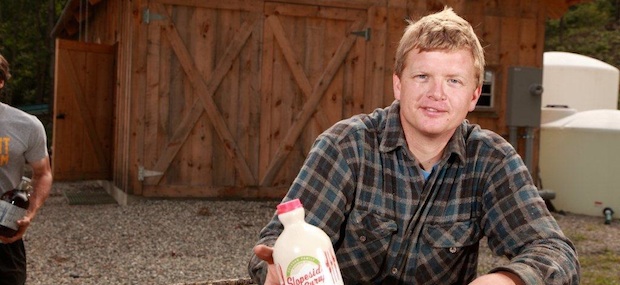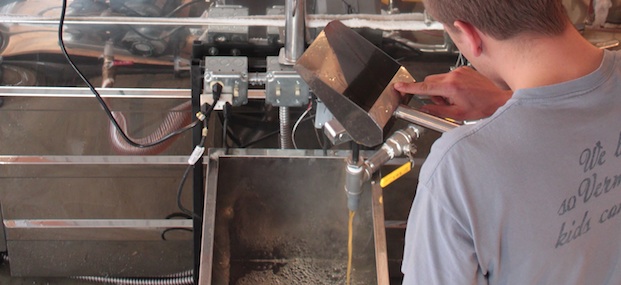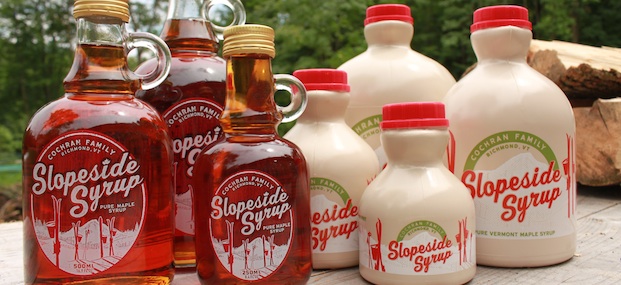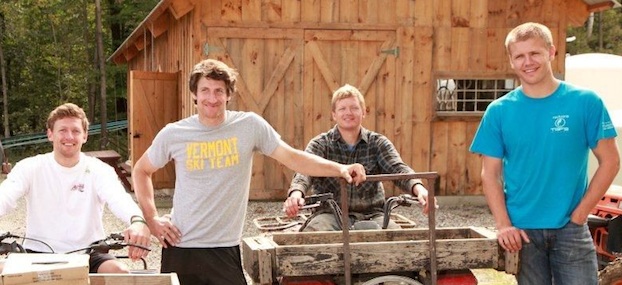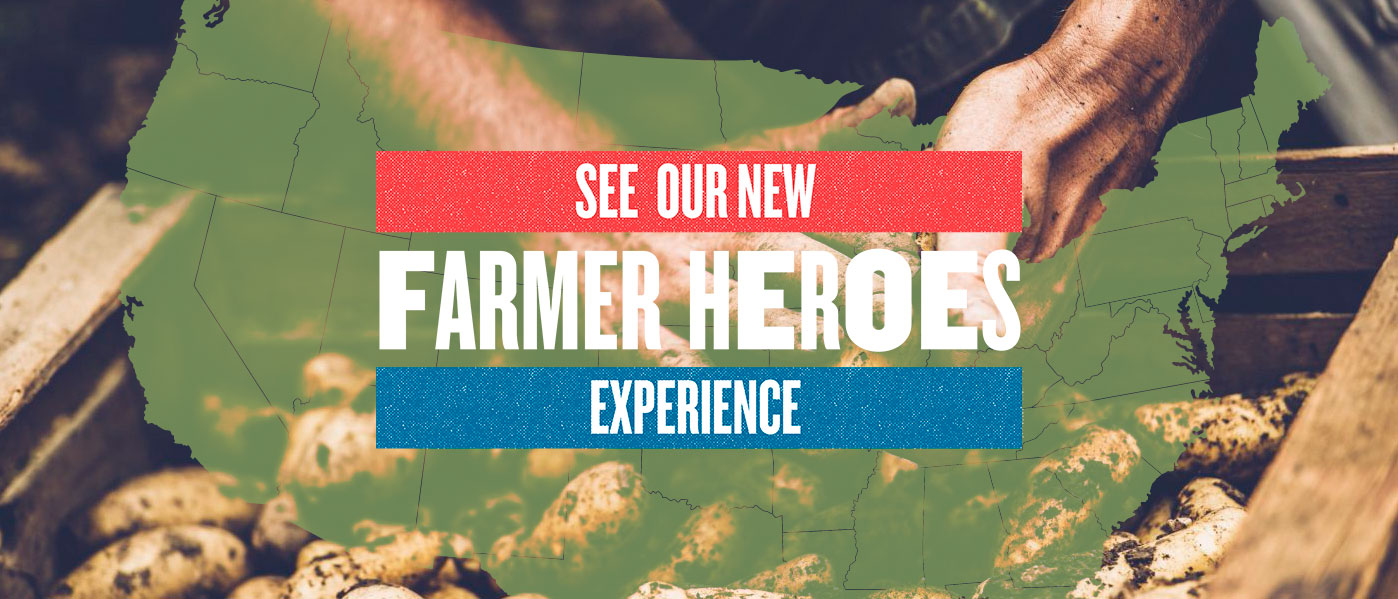The History
When Mickey and Ginny Cochran settled in to their Richmond, Vermont, farmhouse, they built a small ski area, complete with a 300-foot rope tow, for their children to ski on their hillside plot of land during the week. The couple raised world-class athletes, who then went on to raise their own athletically driven children. Four of their grandchildren, after successful skiing careers, are now the owners of Slopeside Syrup. This maple syrup operation, which began in 2011, has grown to almost 23,000 tapped maple trees on about 600 acres of their grandparents’ land. One of the owners is none other than Roger Brown, who was named 2014 Maple Person of the Year by the Vermont Maple Sugar Makers Association.
“[My wife’s grandmother] has been involved with farming for almost 100 years. She has the exact same emotional connection to the weather that I do, that all farmers do.”
The roots of Slopeside go back to 2009, when the family decided to act on something a forester who logged the land a few years back had noticed: it was full of mature maples. There wasn’t much experience with sugaring in the family. Roger’s brother had a brief stint sugaring at the Berkshire School, and their uncle had grown up sugaring, but beyond that, there wasn’t much experience. But with help from local sugar makers along the way, and a vow to “not make the same mistake too many times in a row,” the four cousins took the leap. Using their grandparents’ land, they joined the state’s rich maple community to connect to another classic Vermont tradition.
The Process
Maintaining a syrup operation involves the obvious — sugar maples and a host of machinery — but perhaps most importantly, it involves patience and time. Sugaring begins with a network of tubes, installed almost like an irrigation system all the way through the forest. In order to ensure that no leaks or tears will render future connection difficult, the lines are consistently checked through the fall. Come February, the tapping begins. A small hole is drilled about waist high in the tree, and the plastic spout is inserted. In order to maintain the health and wellness of the drilled tree, the wood around the tap hole must be monitored and cleaned.
Rather than attaching buckets to each individual spout for sap collection, the Slopeside guys use their 120 miles of tubing to run the sap right from tree to sugarhouse, letting gravity do more of the work. Without having to carry buckets through the woods, the sap gets where it needs to go much faster. This sophisticated system also enables the tree to be put “under vacuum,” creating a pressure differential in the tree that helps it soak up groundwater, therefore allowing it to run more sap.
Once all the sap has collected at the sugarhouse, it runs through the reverse osmosis machine. This machine forces the sap through a very fine filter, separating the small water molecules from the larger sugar molecules. The sugar content reaches about 16% during this process, a significant increase from the 2% when it is collected. Next, the boiling process — the “heart and soul of the sugarhouse.” The Slopeside evaporator takes the sap and boils it to a delicious 67% sugar content, removing about 90% of the water from the party. Finally, the boiled syrup is filtered into a thirty-gallon tank and mixed with diatomaceous earth, which naturally blocks large impurities left after the boiling process. The finished syrup, in all its amber glory, is packaged into 40-gallon stainless steel barrels for bulk processors, retailers, farmers markets, or is bottled for Slopeside’s own distribution.
Untapped
The four Slopeside cousins have always kept their athleticism at the forefront of their lives. “My cousin Jim went to two Olympics, and we were all on the US Ski Team at one point,” Roger explained, “It’s always been a consideration.” The connection between the sporting and sugaring life was of course, the syrup. A natural source of energy, the simplicity of maple syrup is appealing for not just Brown’s athletic family, but also to pro-cyclist and longtime maple advocate Ted King, who was known to stop by sugar houses on his springtime New Hampshire bike rides. The Slopeside guys, King, and PR maestro Andrew Gardner teamed up to create UnTapped: an alternative athletic fuel with a twist. The twist? It’s just maple syrup.
“I think the simplicity of it is appealing to a lot of people, and it’s appealing to us as the people getting the business going,” Roger said. “You’re not formulating anything, you’re not buying ingredients. We were just a bunch of athletes who looked at what’s in maple syrup versus other energy gel choices, and made the connection. The best part is, it’s just syrup.” The team found someone to package the syrup, ran a successful crowdfunding campaign to raise money for the first official run, and they were off.
The Issues
Roger is no stranger to the weather-dependent, stressful nature of the industry. He finds that a call with his wife’s 92-year-old grandmother, who grew up on a wheat farm in Mayfield, Kansas, helps put it all in perspective. “I think she understands, in a way that no one who hasn’t felt the powerlessness of being weather-dependent understands, and you just wait. There’s nothing you can do. At any point, you can have anything from a storm to a plague of locusts. It’s like watching a train wreck in super slow motion. But it’s neat talking to her — she’s been involved with farming for almost 100 years. She has the exact same emotional connection to the weather that I do, that all farmers do.”
“I think a lot of sustainable farming is about finding good outlets for what you’re doing.”
In addition to challenges the weather brings, there’s the ever-existing financial struggle. “How do you make a consistent living for your family? That’s a big one,” Roger cites. “Finding markets for your stuff, getting it out there and sold, finding and financing equipment, the whole thing. Production of agriculture is stressful — that’s what holds true in the industry.”
Roger’s advice? “Hey, why not put maple in your coffee?”
Competitors are known to take advantage of the strong maple brand. Roger explains that tt’s easy for them to label their products as maple flavored, when in reality, there’s not a drop of real maple to be found. “When you think you’re getting something you think is maple syrup, make sure it’s maple syrup,” he added.
“I think a lot of sustainable farming is about finding good outlets for what you’re doing, especially in the maple world. The maple brand is great, it’s strong, but getting people to think about using syrup in ways that they haven’t traditionally thought about it is really important to keeping the industry alive. Maple is the sugar you should use for everything.”
Speaking as a member of a family raised on maple and thriving, on the slopes and off, Roger has convinced us. Cheers!
All photos courtesy of Slopeside Syrup.
Visit SlopesideSyrup.com